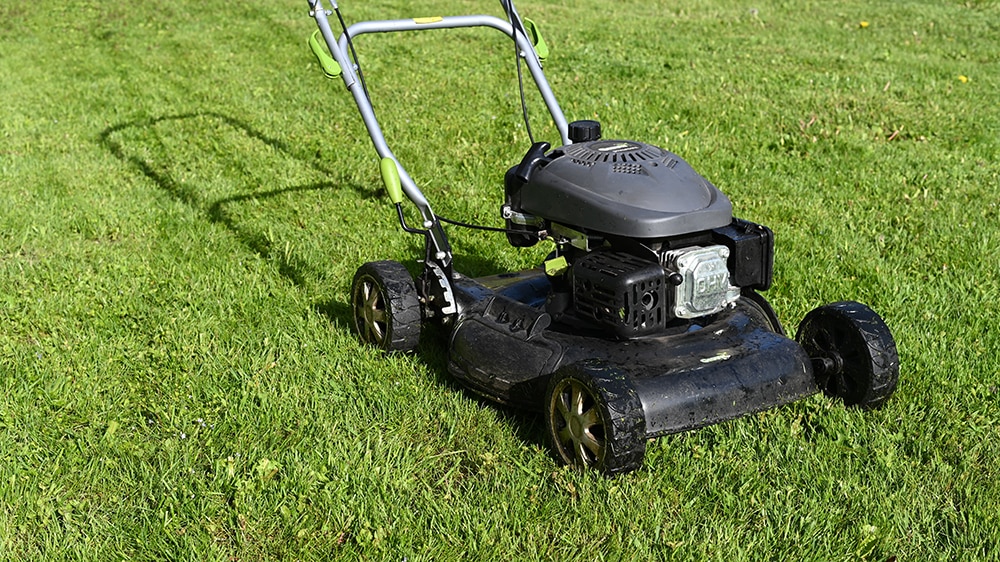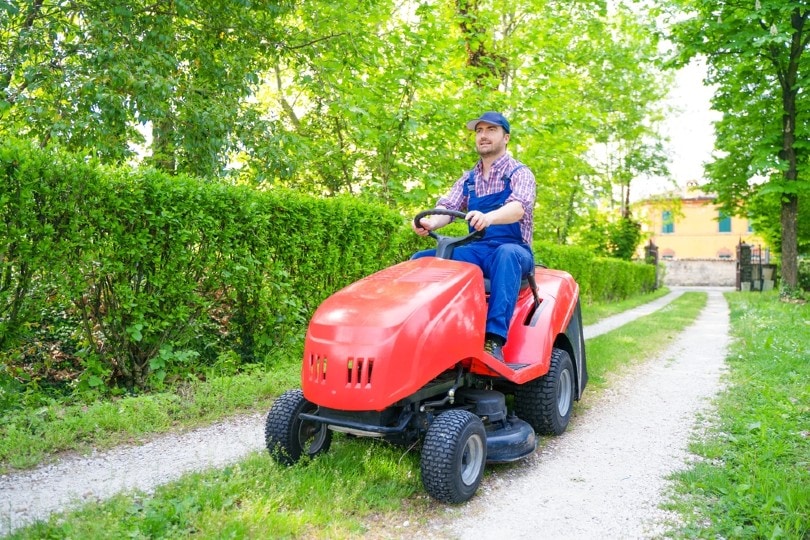Who Invented the Lawn Mower & When? (History of the Lawn Mower)
-
Pete Ortiz
- Last updated:

The lawn mower is one of the most widely used pieces of lawn care equipment today. But who invented the lawn mower, and when? The first recorded lawn mower was patented by Edwin Beard Budding in 1830.
Budding, a British engineer, was working on a way to improve the efficiency of the machines used to cut cloth for clothing production. He adapted his design for cutting cloth to cut grass, and the lawn mower was born!
But that’s only where the journey begins. The lawn mower has enjoyed numerous improvements over the years. So read on to learn all about this incredible invention, from its humble beginnings to the sleek and powerful machines we use today.
History of the Lawn Mower
About Edwin Beard Budding
Edwin Beard Budding was born in Stroud, England in 1795. He was the eldest of seven children and grew up in a family of clothiers. Edwin’s father, George Budding, invented a machine for shearing cloth which helped to revolutionize the textile industry. It is no surprise then that Edwin inherited his father’s inventive spirit.
His initial design was based on a rotating cylindrical blade that was powered by a horse or other animals walking in a circle. This design proved to be too difficult to implement, so Budding turned his attention to a new design that used a series of reciprocating blades.
Lawn Mowers in the 1800s
Budding’s invention was first patented in 1830 as “a machine for mowing lawns, etc.” and he subsequently founded the Atlas Works company to manufacture his lawn mowers. Due to their expensive price tag, Budding’s lawn mowers were initially only purchased by wealthy landowners and institutions such as the British Royal Horticultural Society.
It wasn’t until the 1900s that lawn mowers began to be mass-produced, and their price dropped enough to make them affordable for the average person. Today, lawn mowers are an essential tool for anyone who wants to keep their lawn looking its best.
Edwin Beard Budding may not be a household name, but his invention has had a profound impact on the way we care for our gardens and yards.
Lawn Mowers in the 1900s
After Budding’s invention in 1830, lawn mowers were not mass-produced until about 100 years later. In 1921, the Atlas Chain Company started making lawn mowers. The company later became British Atco.
Throughout the 1900s, the lawn mower saw several redesigns and improvements. In 1937, Atco introduced the first self-propelled lawn mower. This model was powered by a petrol engine and had gears that allowed the user to adjust the speed.
During World War II, many manufacturing companies turned their attention to producing items for the war effort. This included lawn mowers. In 1942, the British company Ransomes, Sims & Jefferies produced a petrol-powered lawn mower for the war effort.
This model was called the “Cylinder Mower.” It was used to cut the grass on airfields so that planes could take off and land more easily.
After the war, lawn mowers became more available to the average consumer. In the 1950s, rotary lawn mowers were introduced. These mowers had blades that rotated in a horizontal plane. This design was more efficient than the older reel mowers and helped to make lawn mowing quicker and easier.
Lawn Mowers in the 2000s
Today, there are many different types and models of lawn mowers available on the market. Some are designed for specific tasks, such as mowing lawns with hills or steep slopes.
Others are designed to be more environmentally friendly, such as electric or solar-powered mowers. No matter what type of lawn mower you use, they all have one thing in common—they make keeping your lawn looking nice a lot easier!
The Future of Lawn Mowers: What’s Next?
Lawn mowers have been around for quite some time, and their history is fascinating. But what does the future hold for these trusty machines?
It’s safe to say that lawn mowers will continue to be a staple in gardens and yards around the world. However, there is always room for improvement. Here are a few things that could be in store for the future of lawn mowers:
Improved Battery Life

One of the main drawbacks of electric lawn mowers is that they don’t have the same runtime as petrol models. This can be a pain if you have a large garden or lawn to mow.
However, battery technology is constantly improving. In the future, we could see electric lawn mowers with much longer runtimes—making them a more viable option for those with large areas to mow.
Quieter Operation

Another issue with electric lawn mowers is that they can be quite loud. This can be a nuisance for both you and your neighbors.
Fortunately, manufacturers are aware of this problem and are working on ways to make their products quieter. In the future, we could see electric lawn mowers that produce very little noise—making them much more pleasant to use.
Self-Sharpening Blades

One of the most frustrating things about using a lawn mower is having to constantly sharpen the blades. This is something that takes time and effort—and it’s something that you have to do on a regular basis.
However, this could all be a thing of the past thanks to self-sharpening blades. These are exactly what they sound like—blades that sharpen themselves. This would be a huge time-saver and would make using a lawn mower much more convenient.
Automatic Height Adjustment
If you’ve ever used a lawn mower, then you know that one of the most important things is to get the blade height right. If it’s too low, you’ll end up scalping your lawn. If it’s too high, the grass will be longer than you want it to be. Either way, it can be a pain to constantly adjust the blade height.
In the future, we could see lawnmowers that automatically adjust the blade height based on the current length of the grass. This would take all the guesswork out of mowing your lawn and would make it much easier to get a perfect cut every time.
These are just a few of the things that could be in store for the future of lawnmowers. As you can see, there is always room for improvement—and manufacturers are always working on new ways to make their products better. So whether you’re a petrolhead or an electric fan, there’s sure to be something in store for you in the future.
In Conclusion
Edwin Beard Budding may not have been the first person to ever invent a way to cut grass, but he was certainly the first to be awarded a patent for his lawn mower design. And his design has stood the test of time, serving as the basis for nearly all lawnmowers in use today. So next time you’re out mowing your lawn, take a moment to think about the man who made it possible.
Featured Image Credit: Andres Siimon, Unsplash
Contents



